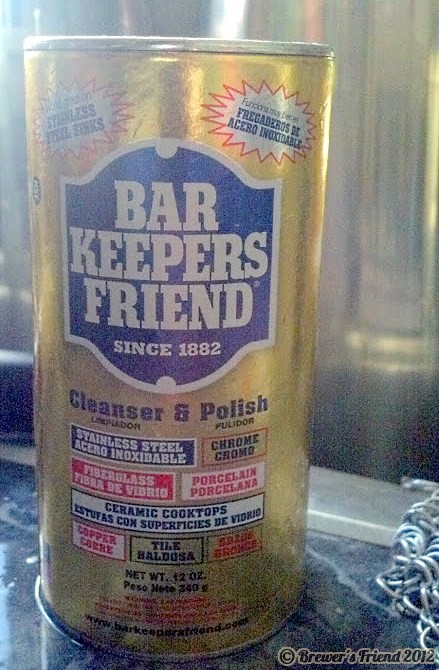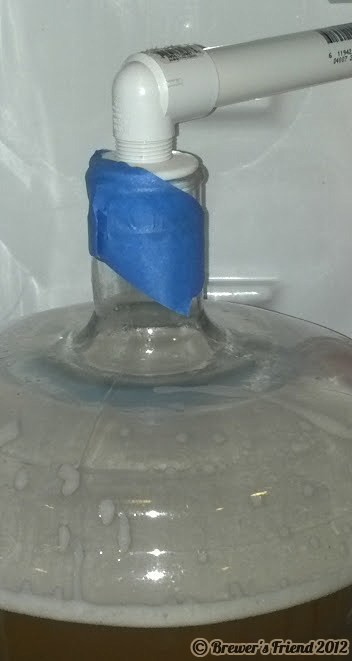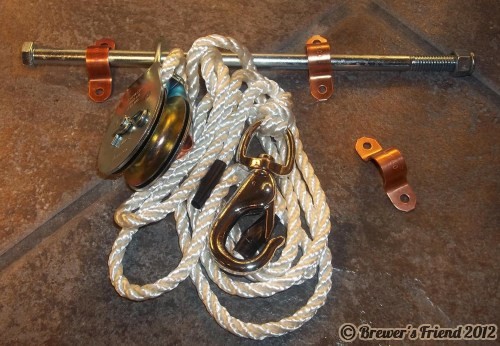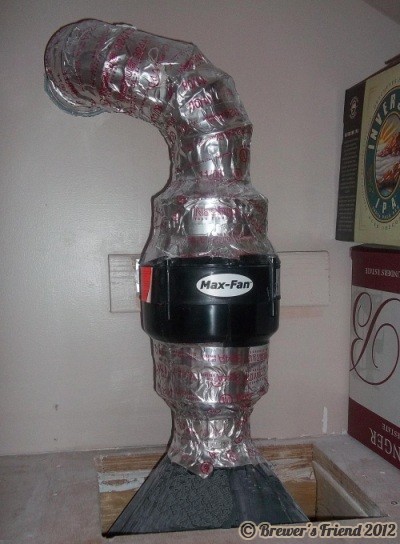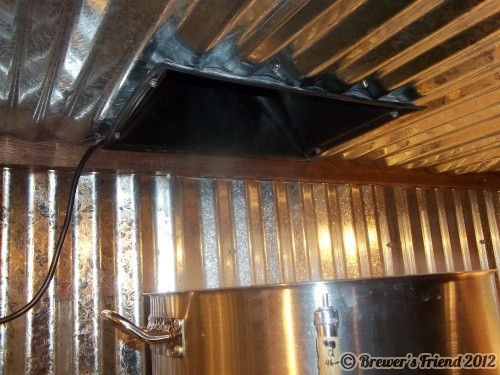Detailed Guide for Cleaning a Better Bottle
Tuesday, November 20th, 2012A while back I posted about my Better Bottle blowoff setup. During my search for a good blowoff arrangement, I ended up calling the manufacturer of Better Bottles (BBs). The man I spoke with was super helpful and knowledgeable.
During that conversation, I decided to ask him about cleaning. The main reason I brought up cleaning was that I commonly have a 1-1.5 inch line of fermentation “gunk” that forms at the top of the BB right before it begins to taper to the neck. This line forms on the top band of the BB. Since I often leave my beer in the primary for 3 weeks, that gunk can get pretty stuck on there. Also, the bands on the BB are textured, and the texture makes gunk stubbornly adhere sometimes.
My primary cleaner is OxyClean, so with that in mind here’s the information he shared with me a few years ago. I’ll then share my cleaning regimen, modified after my conversation with the BB company plus a newer step for the most stubborn of stubborn gunk!
Better Bottle cleaning advice direct from the company:
- The BB Guy said OxyClean can be used, but you’ve got to be careful – it’s powerful stuff. Don’t pour the powder directly in on the plastic. First put in the Oxy in water to dissolve it, when pour it in. Ensure that any Oxy concentration rate is low – read the package. I actually make mine a lower concentration than the “general cleaning” amount on the box…it cleans up my BBs fine. What I do is put my Oxy in a bit of warm water, dissolve it and pour it in the BB and swiftly fill it up to my desired level. The BB Guy explained that the reason you want to be careful with Oxy is that high concentrations of Oxy over a period of time may weaken the bottle. He also didn’t recommend soaking in Oxy for more and a few hours at the most…not overnight.
- BB Guy cautioned about using super hot water – don’t do it. It won’t melt the bottle, but over time it can weaken it. He said to use water you can comfortably put your hand in. I’m typically a “blazing hot” water washer type, so I backed off.
- BB Guy had a great suggestion about getting that fermentation gunk off: put a soft washcloth into the bottle with some water. Swish it around and the washcloth will pull the gunk off.
Here’s my BB cleaning regimen along with some photos:
First, let’s start with a dirty carboy I just racked from – this is with NO rinsing of any kind, just poured out the remaining liquid after racking to my keg:

Check out all that gunk on the textured band and all the way up to the neck of the carboy – this is from WLP002, a big top cropper!

Detailed cleaning steps:
- I rinse them out with warm water and leave some warm water in there (about .5 gallon).
- I put my orange carboy cap on top and shake the heck outta the bottle. This “water scrub” takes off a good portion of the gunk. Here’s what’s left after that vigorous shake – loads better, but not clean:

- I put in a small squirt of Ivory liquid dish soap and put about 1.5 gallons very warm water in. I replace the carboy cap, and invert the carboy on a bucket with a hand towel on the lip. The towel keeps the BB from sliding into the bucket. I’ll let it soak for a while…sometimes a day. I used to do this with Oxy, but after my conversation with the BB guy I made switch to Ivory soap as change to my process.

- I dump out the soapy water and rinse out the BB. I inspect it carefully to see if there’s some gunk still present. About 60% of the time, there are some scattered gunk spots left.
- If there’s remaining gunk, I do the Oxy soak. I invert the BB like step #3 above and leave it for an hour or two only to reduce chemical stress on the BB per the company.
- Still remaining gunk? If yes, then I pour out most of the Oxy water and leave about .25 to .5 gallon in the BB. I put my washcloth in there and swirl it around. Most of the time the BB is inverted/partially inverted with carboy cap on top and I’m spinning it around. It works well, and most of the time my BBs are clean at this step. Here’s the amount of water and my designated cotton BB washrag:

- Gunk not gone yet? Often, this is with wheat beers and aggressive top croppers. That’s when I pull out the heavy artillery – the Carboy Cleaner. I had some anxiety about using these…would they scratch the plastic? The BB Guy said not to use brushes for this very reason. I wrote the Carboy Cleaner company and got a prompt response – yes other people use them for BB’s. No there are no surfaces on the cleaning arms that could scratch the plastic. I decided to give them a try. They work great! I use OxyClean water and a few passes takes care of it. However, I am cautious and don’t want to invite trouble and that’s why I use them as the last resort/ Typically that’s about 20% of the time. Before each Carboy Cleaner use on a BB, I check the cleaning arms carefully. I check the edges to ensure the plastic inside the arm that provides the necessary rigidity isn’t peeking out and I check the stitching to ensure the plastic “thread” isn’t coming unstitched. I’ve had the same Carboy Cleaner pads for 2 years now, and haven’t yet had to switch to the extra, replacement pair that came with them. One other thing to mention – if you decide to purchase a Carboy Cleaner for BB’s, tell them you use BBs when you purchase. He sent me the appropriate drilled stopper to work with BB’s! Great service. By the way, I have NEVER had a BB that couldn’t get 100% gunk free after this step.
- Rinse and let air dry. The BB Guy said to dry them on their sides…it will go faster. I tried it and found that I agree. Shake as much water out as you can and set it on its side. More water will pool at the bottom. Keep shaking it out and in a day or two it will be dry. In this specific BB cleaning case, it was clean by Step 6 – here’s the final product – all clear!

- I put a piece of clingwrap on top of the opening to keep dust from getting in BBs during storage.
So that’s my Better Bottle cleaning regimen. With the addition of the Carboy Cleaner on the most stubborn fermentation remnants, I’m now confident that I can safely clean BBs no matter the gunkage!
Post by Brewer kcpup














